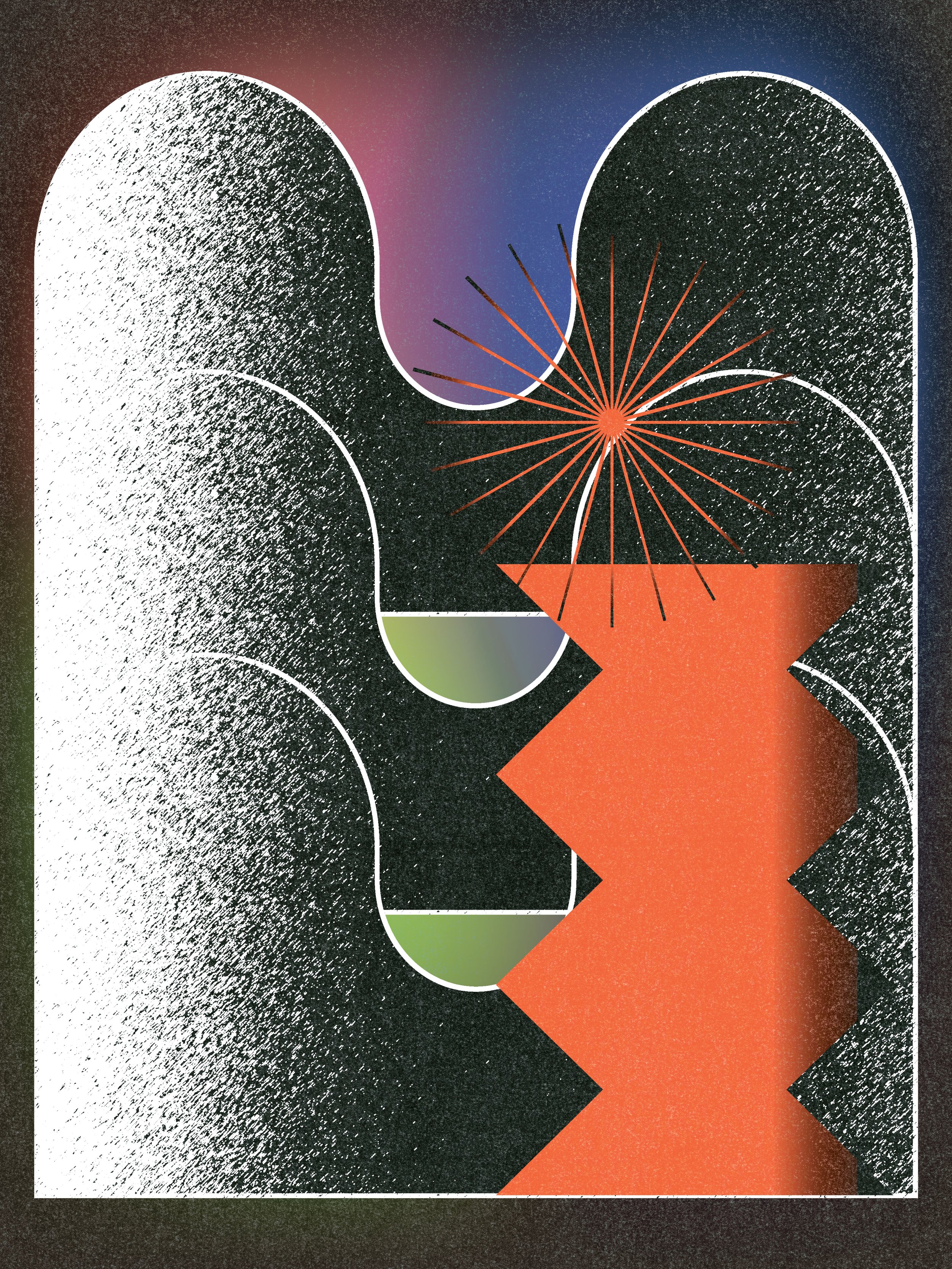The Insides of Spaces
June 22, 2022
Melissa Santamaría
Melissa Santamaría is a designer and generative projection artist from Mexico City. Using TouchDesigner, she coalesces her ideas, colors, and textures into abstract, visceral examinations of her own emotional state. She has created concert visuals, release videos, and album artwork for Sufjan Stevens, Flying Lotus, and Hiatus Kaiyote.
Interview by BATSHIT TIMES.
Edited by Ally Wheeler.
A student of architecture, Melissa Santamaría’s process is rooted in her former approach for designing buildings, even though, from an outsider’s perspective, these worlds feel so different.
In architecture, my process was to find an idea, to start sketching it, and more than anything, start imagining what the building was going to look like. What the facade would be like, what colors or materials it would be made of.
This is also how she approaches her art, most of the time imagining the final result of a project before she even begins. She has always had this ability to conceptualize her feelings and turn them into colors or materials that impact the way other people experience her work, whether it be a building design with a certain aura or a visual that elicits a certain emotion.
Most people I meet describe my art as psychedelic, maybe because I mostly play with fluids and bright colors and melting particles. But I wouldn’t really describe it that way.
In my visual art, I try to abstract my feelings into colors. And this is actually very similar to how I would decide what the atmosphere of a building should feel like. I’d think about how different materials react to the sun, what's going to reflect it or absorb it. Or, when designing the insides of spaces, how if I were to use a cold material or a black one, for example, the space would look smaller than if I used bright colors or had lots of windows. This is the type of thinking I apply to my visuals. It’s in my process. The way I feel while I’m creating impacts the outcome of the design. If you were to compare the two directly, the structure of a building is like the textures in my art; the materials I’d use to build the structure are the layers; the colors of the walls create a certain type of room and the colors in my visuals alter the way you experience them.
In architecture, you see a building you like, you see what details you like, and then you use it in your project. That's what my career in architecture was. Finding examples of what you want to use and blending them into something new. It’s like a loop.
The way I feel while I’m creating impacts the outcome of the design. If you were to compare the two directly, the structure of a building is like the textures in my art.
You can sense her aversion to this way of making things. As someone whose art projects an attitude of playfulness and freedom, Santamaría wasn’t all that into the regiment and ultra-grind culture that comes with receiving an architecture degree. After a while, she found herself asking the question, “What am I doing here?” One night, busy procrastinating, she found herself in a deep internet hole researching the work of Takami Nakamoto of light-and-sound creative studio duo NONOTAK. She decided to email him:
Hey Takami,
I’m reaching out because I’m sad with my career choice. I’m studying architecture. I love your projects. And I wanted to ask you, what did you study and how did you get into what you're doing now?
He immediately replied that he was also an architecture student himself. He encouraged her to finish school, saying that most of everything he does today with art and visual design is influenced by architecture and the tools he gained from studying the field.
So I sent him a selfie on my day of graduation. Architecture was definitely a beneficial gateway to my profession. I remember going to school and learning about, say, Peter Simpson, and how he wrote about atmosphere and how a place can totally change everything in your life. And this really stuck with me.
This goes back to how Santamaría describes the connection between choosing a color for a building and choosing a color palette for her 3D visuals. It’s still all about the atmosphere and the final result. Only now, instead of picking from a word bank of design elements to make into a building or a structure, she draws inspiration from the world around her and within her. She talks about being inspired by geometric elements found in nature, by landscapes or the ocean. But rather than using these familiar images as representations in her art, she recontextualizes them into blended visuals that feel entirely organic. Generative art is fleeting, like the ocean and human emotions. They’ve never been seen before and will never be seen again in the same way, after the moment they’re here has passed.
Most of what she creates is not 2D and doesn’t follow a set pattern, which is what makes her current creative process different from designing buildings, things built through patterns and design systems and math. This way of drawing her art from the inside out is intentional. She starts everyday at 7am and begins creating, using her own emotions as inspiration, never going a day without making something.
I think art that people can understand or connect with is art that comes from an honest place. When you create from an honest place, people can relate to what you’re like and from there, relate your art to themselves.
It’s why we want to be friends with artists, why their art speaks to us or moves us or makes us feel something. What makes art so powerful is that it’s an expansion of someone else’s consciousness. Art is a liberation of what’s inside the artist.





